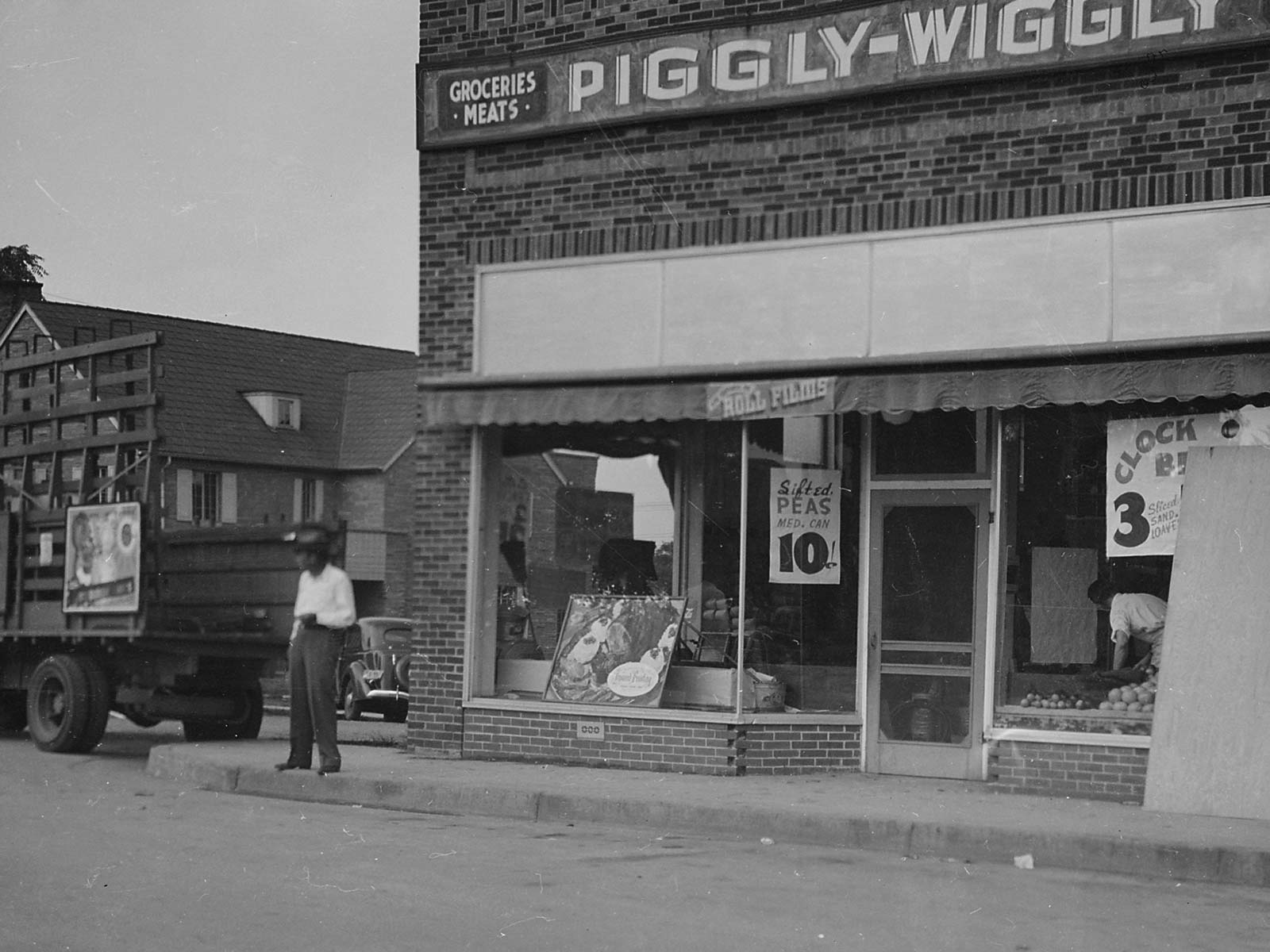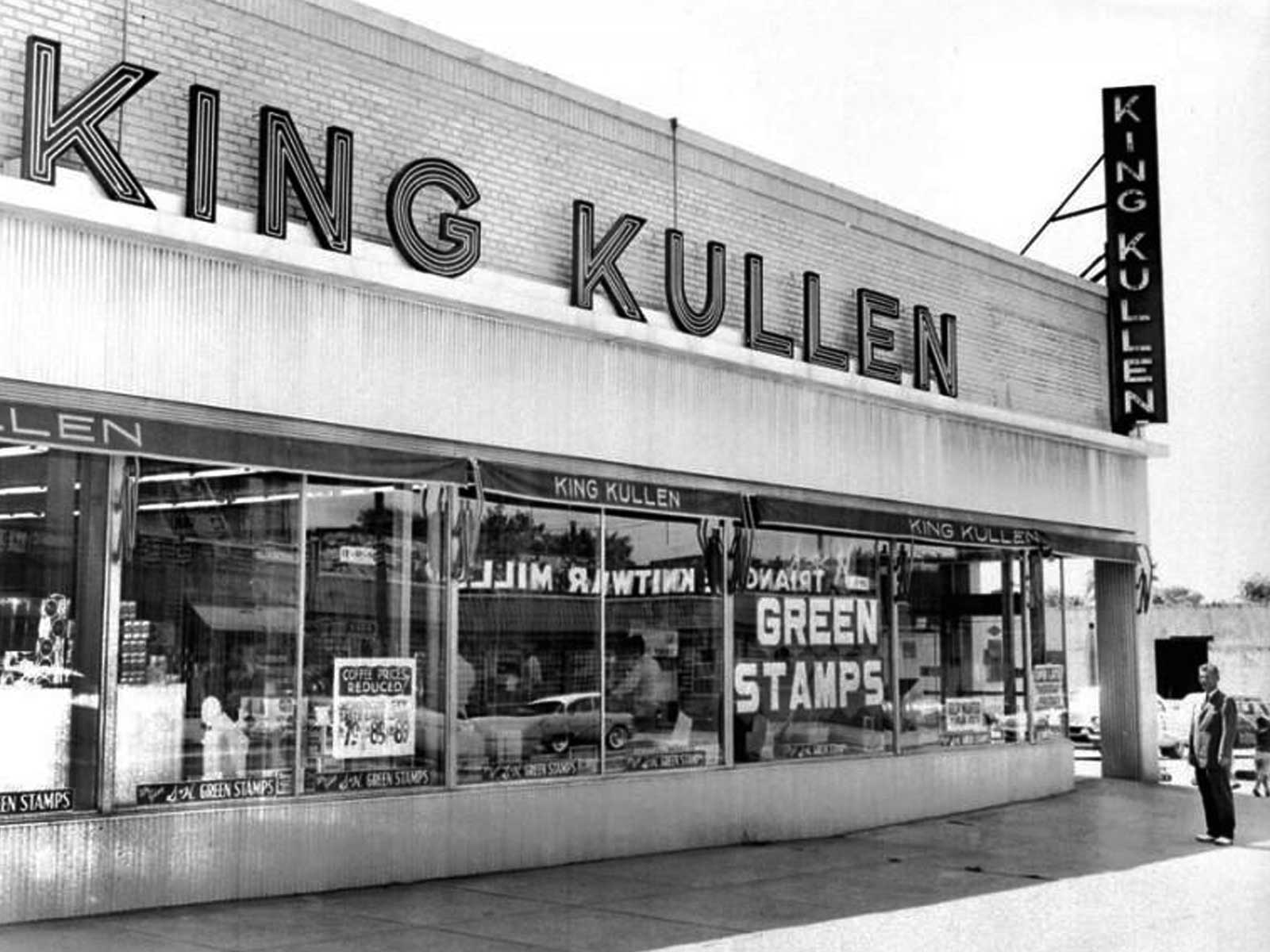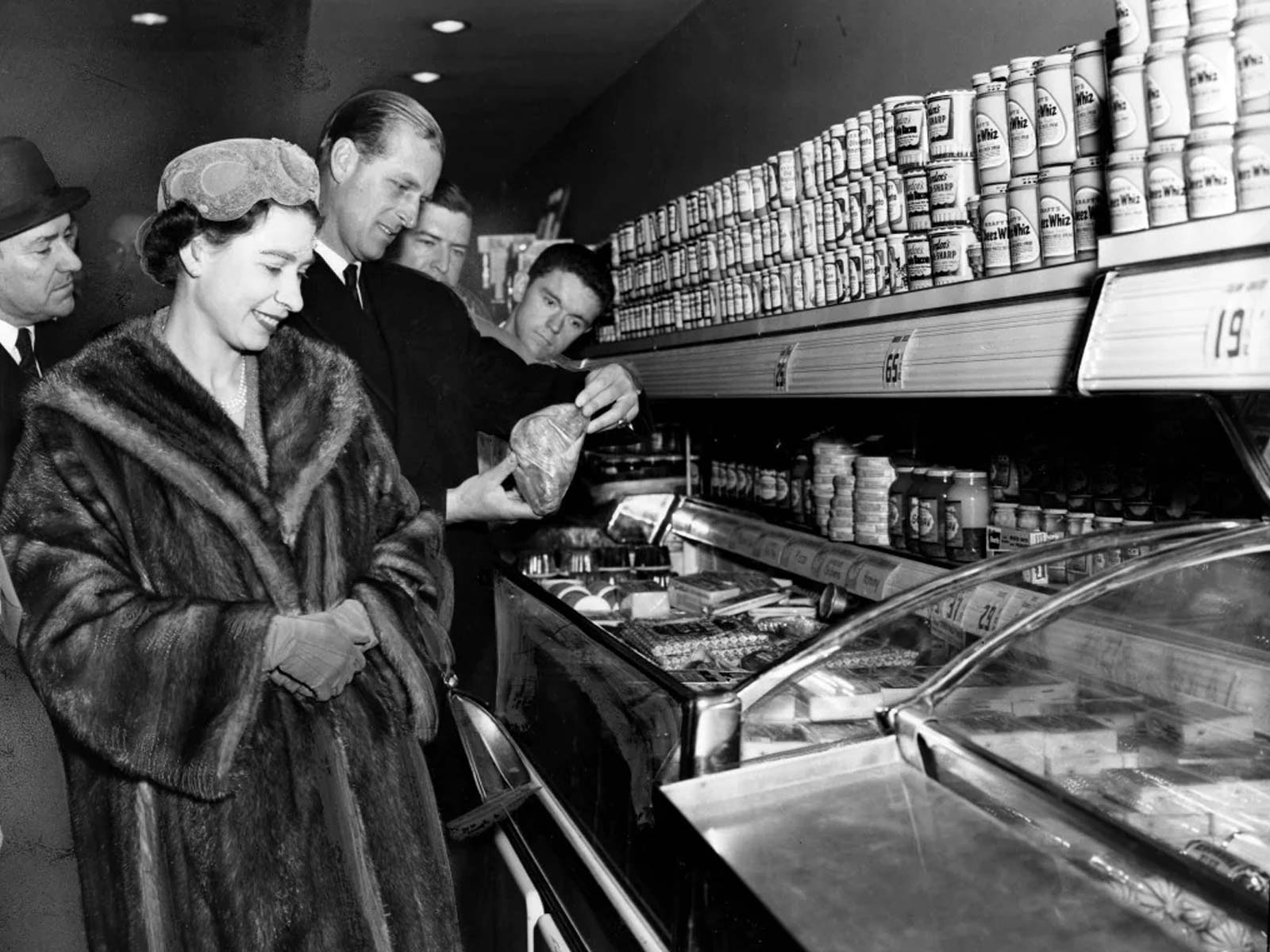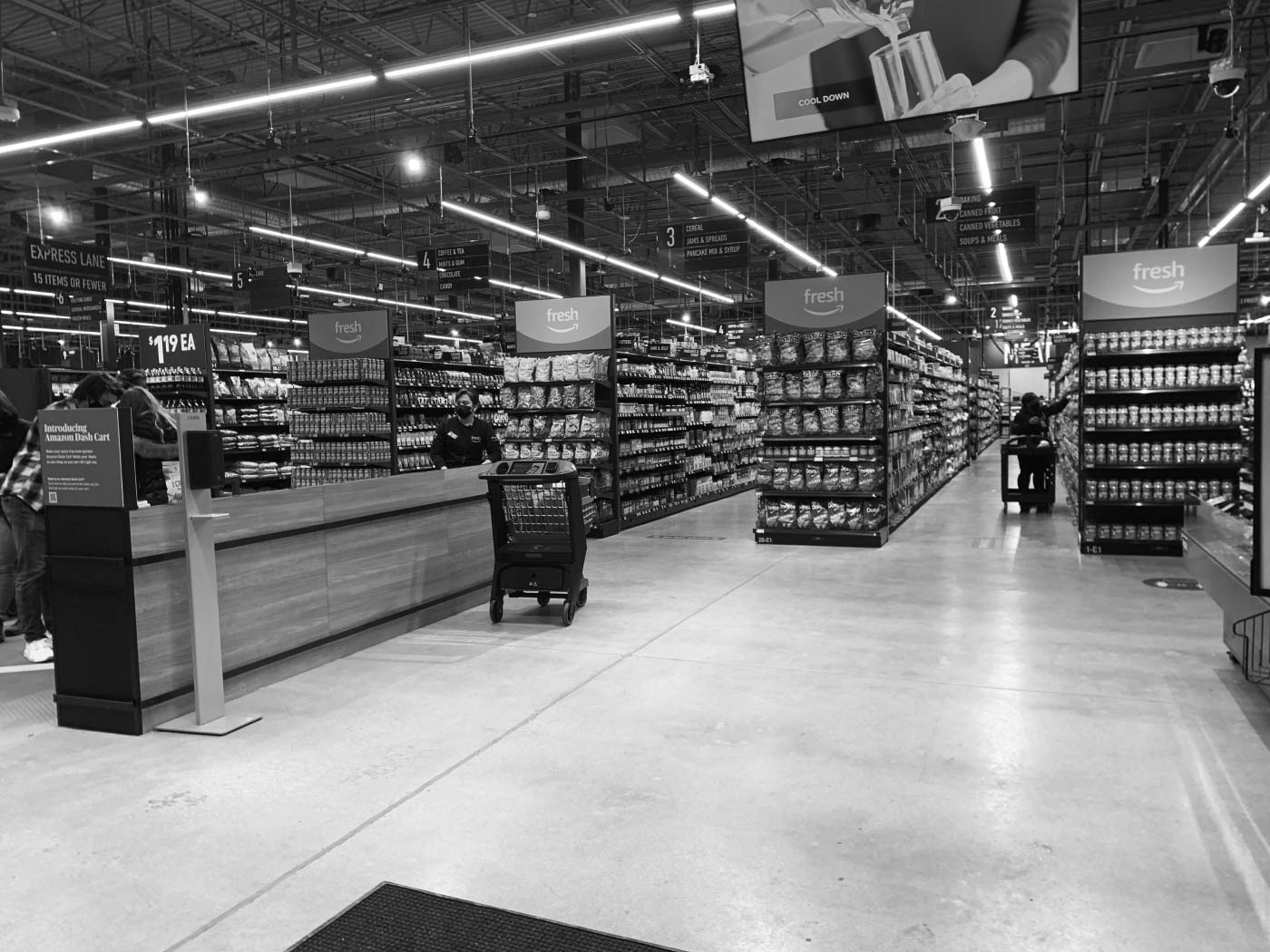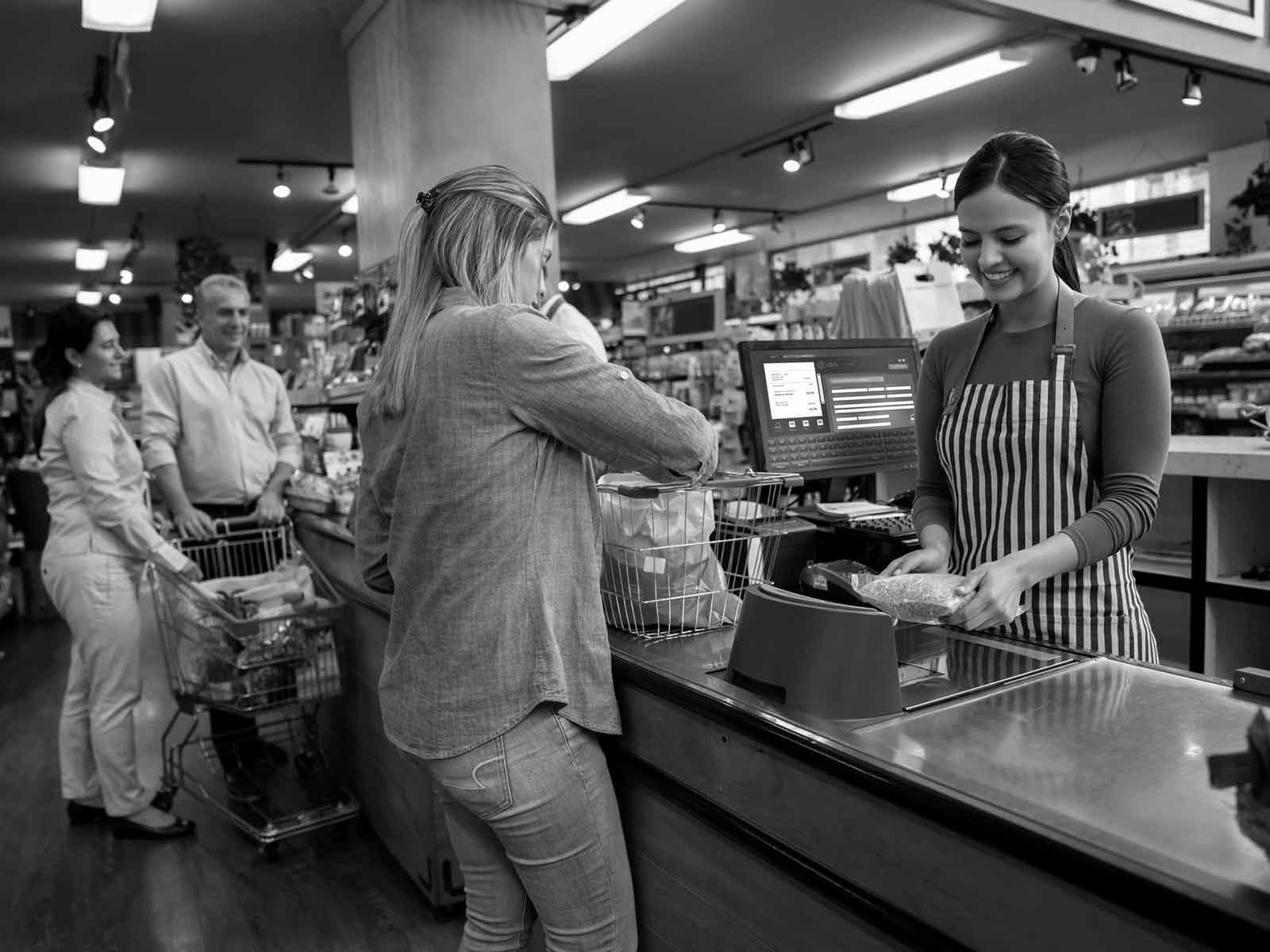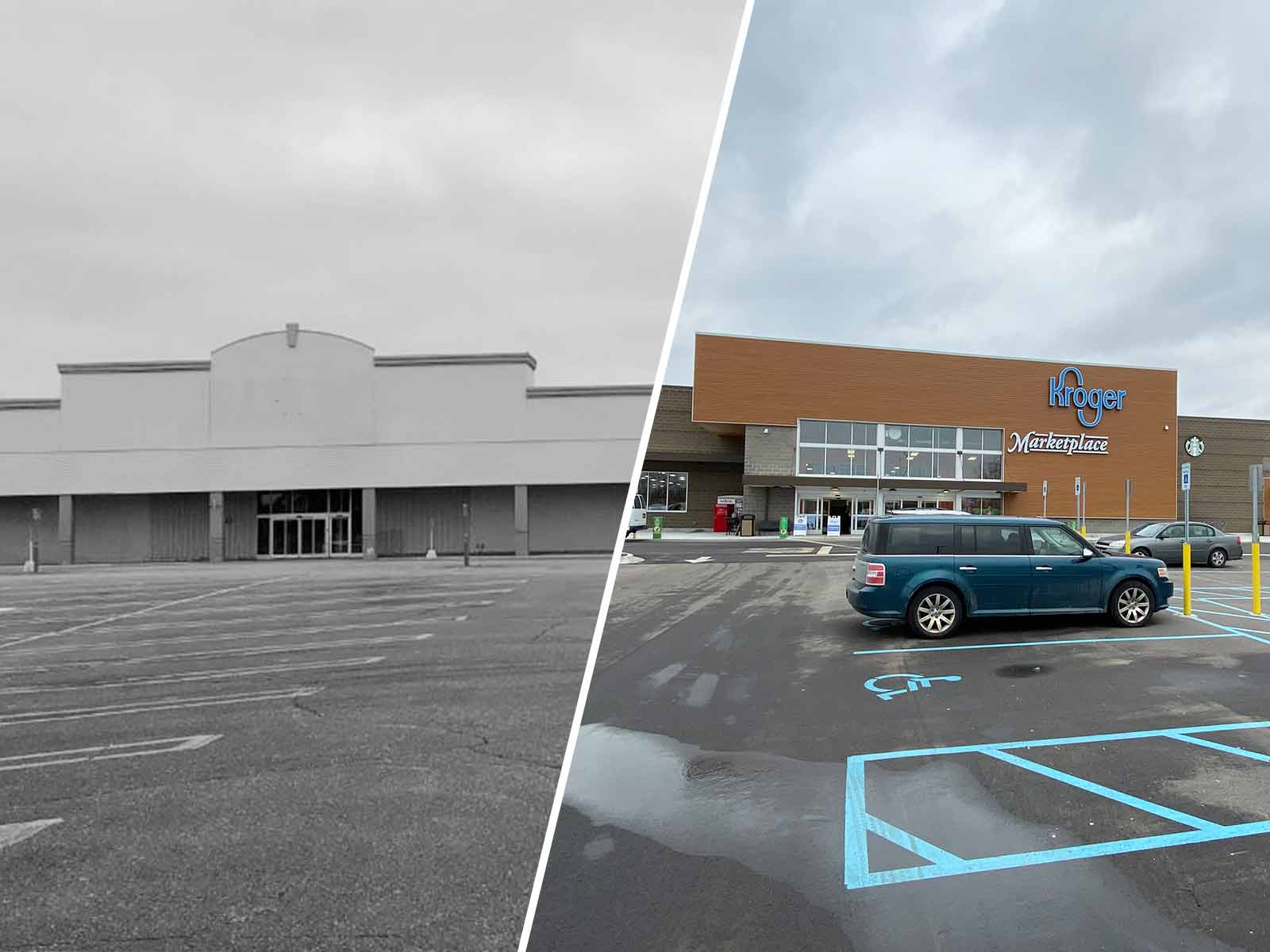The History (and Future) of the Grocery Store
A story of adaptability and resilience


Chapter 1:
Piggly Wiggly and the First Self Service Stores
On a warm September day in 1916, a young man named Clarence Saunders flung open the doors to his new store in Memphis, Tennessee for the first time. As the first customers curiously peered across the threshold of this peculiar new shop, Saunders couldn’t have known just how fundamentally his idea would change shopping forever.

Affectionately named Piggly Wiggly, Saunders had a radical concept for his new store: what if, he posited, we display our products in the store and let the customers choose what they want from a selection of options?
And what if those products are organized by category in a convenient way, with prices displayed on shelves so that customers could comparison shop? Customers who entered Piggly Wiggly passed through a turnstile and picked up a shopping basket before beginning their hunt through the neatly stocked aisles. When finished, they lined up at the cashier who would check them out. Sounds familiar right? At the time, these were astonishing innovations that no one had seen before.
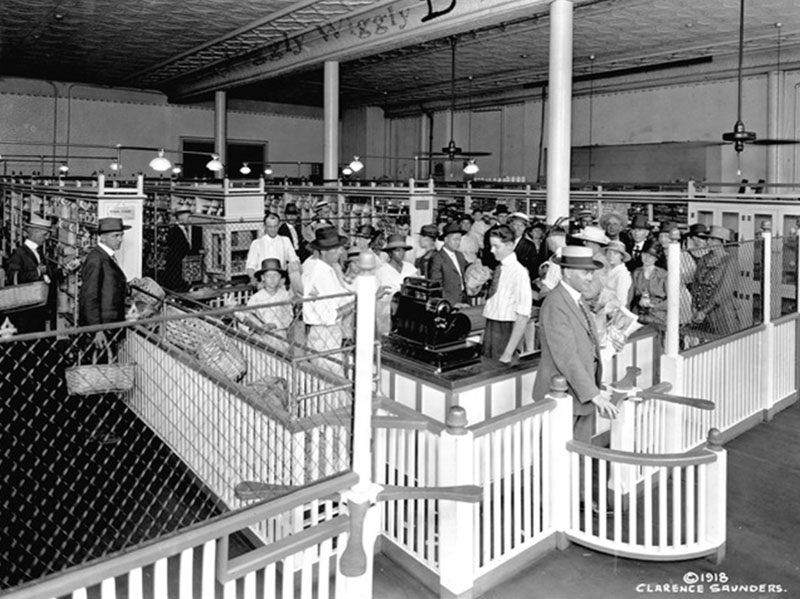

Prior to Saunders’ idea for self-service grocery shopping, customers would pass a list of items to a clerk behind a desk, who would then go about preparing their order while they waited. Shops often only carried one type of product per category, and the price was the price. Saunders had recognized the inefficiencies and added labor costs of paying clerks to fulfill every customer’s order. He also suspected that shoppers would relish the chance to pick out their own products, comparing items based on price and quality.
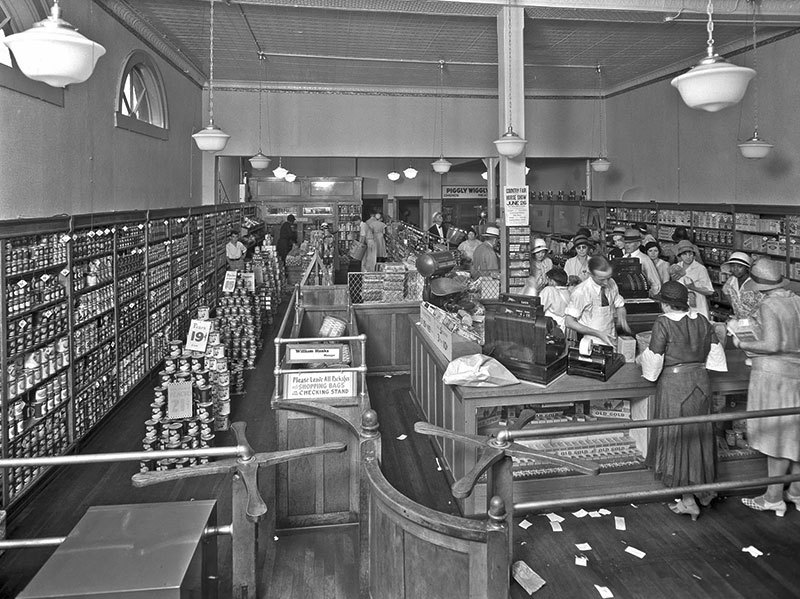

Saunders was right. And recognizing this success, he hit on another enduring idea. He decided to franchise the Piggly Wiggly concept to other would-be grocers. According to Life Magazine, by 1923 there were more than 1,200 Piggly Wiggly stores across the United States, ringing in more than $100 million in annual sales, a staggering figure for the time. Meanwhile, in Canada, Loblaw Groceterias was founded in Toronto in 1919, pioneering self-service shopping north of the border.
1,200
stores in 1923
$100M
annual sales




1,200
stores in 1923
$100M
annual sales
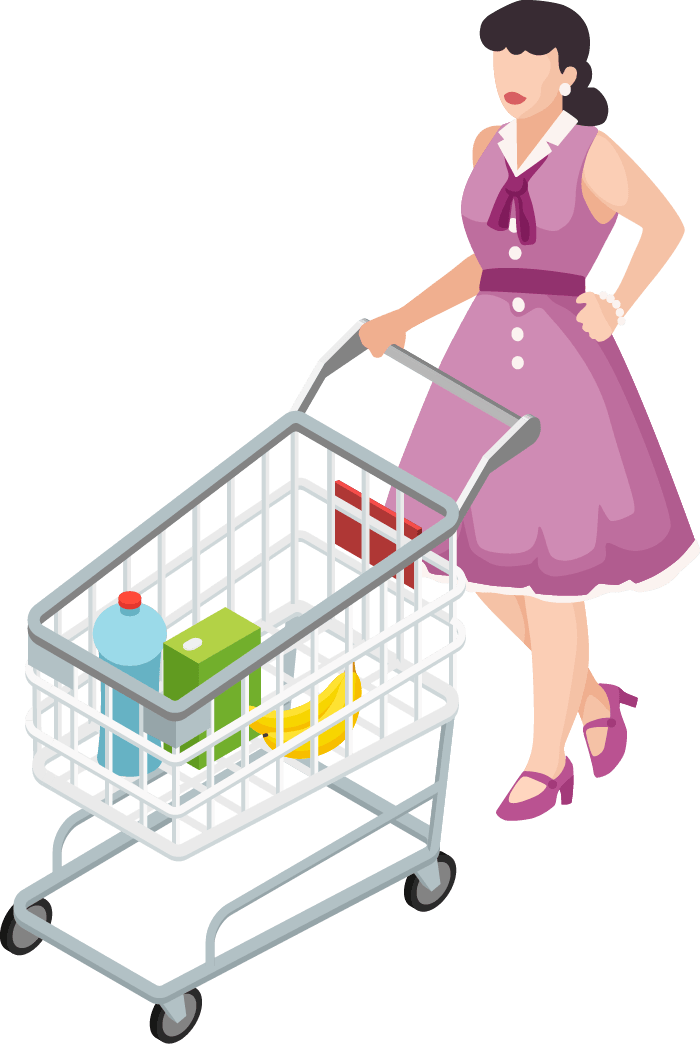

Chapter 2:
King Kullen and the First True Supermarkets
Chain stores began to proliferate in the 1920s, with names like Kroger, A&P, Dominion and Loblaws rising to prominence.
However, many of these stores were relatively small and some stuck with a counter service model. Meat, fresh produce and bread were still typically sold at separate, single purpose shops.
At the same time, the original food delivery service was in its heyday – the “Milk Man.” Because most people had no refrigeration, fresh milk was delivered to homes in glass bottles each day by these dependable dairy ambassadors, a service that residents relied on.
The beginning of the end for this fragmented approach to shopping appeared when the world’s first supermarket, King Kullen, opened on Long Island on August 4, 1930. Located in a large warehouse on the outskirts of New York City, this novel concept would usher in yet another new era in grocery retail – one in step with the modernizing times.



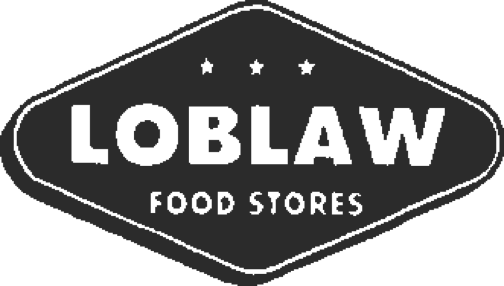



Several things had changed since Clarence Saunders opened his doors in 1916. As with other areas of the economy, the rise of the automobile was central.
Grocers were no longer confined to the small spaces typically found in urban centers at the time. Customers could travel to them. King Kullen lured customers to its cavernous suburban location with a new promise: ample free parking. Equally, the growing availability of refrigeration allowed burgeoning supermarkets to offer more perishable items, including meat and dairy products. King Kullen took a “no frills” approach with an emphasis on volume. Products were displayed and sold out of their packing crates. All of this allowed the store to offer customers more products at considerably lower prices.
Following King Kullen’s lead, during the 1930s grocery retailers across North America, such as Kroger, Safeway and A&P, began to consolidate thousands of smaller shops in favor of a fewer number of larger supermarkets. While the number of stores plummeted, overall sales skyrocketed as people began flocking to the new supermarkets.

Chapter 3:
The Post-War Boom
The post-World War II economic boom ushered in a golden age for the supermarket, driven by the rapid rise of the suburban American dream. Over the 1950s and 1960s, new, modern supermarkets with eye-catching designs and iconic styles proliferated across the continent’s burgeoning and increasingly affluent suburbs.
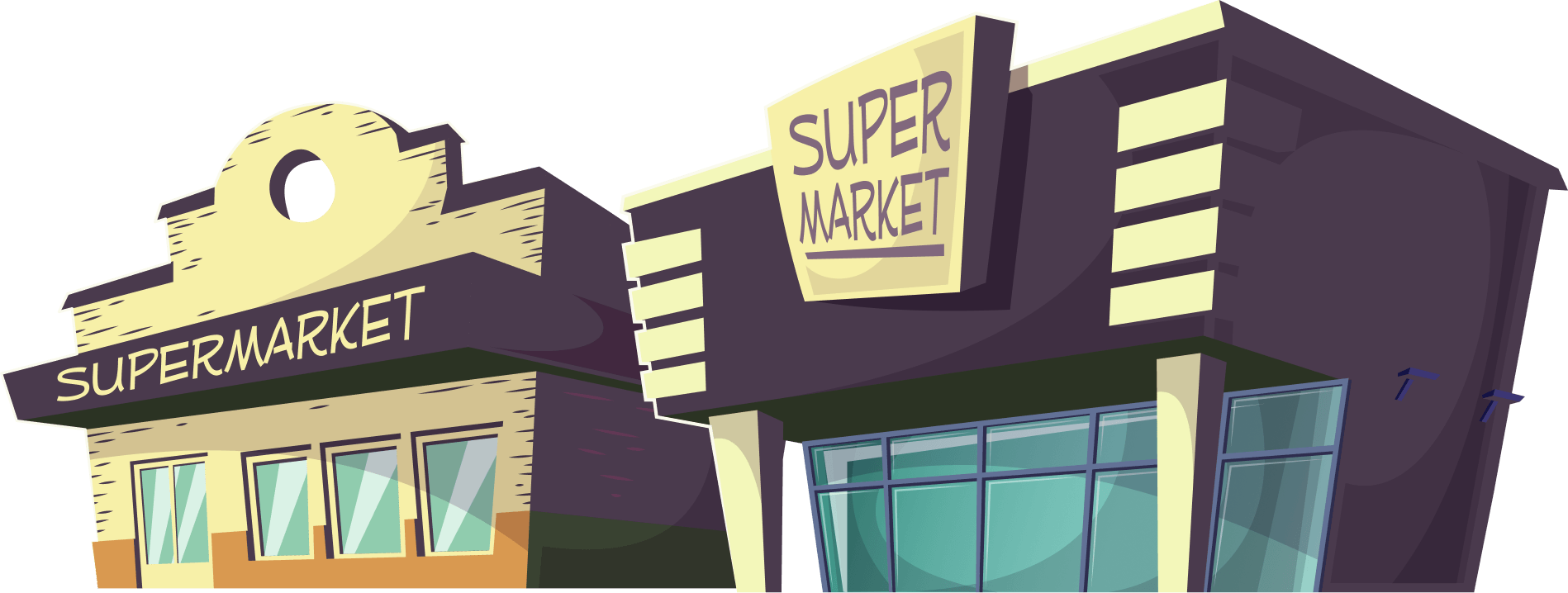
This uniquely North American phenomenon was so novel that Queen Elizabeth II and Prince Philip paid a visit to a Maryland grocery store during a 1957 trip to the United States just to see what all the fuss was about. But by the middle of the 20th century, the supermarket craze was catching on in Europe.
The Albrecht brothers founded what would become ALDI, one of the world’s largest discount supermarket chains, when they took over their mother’s store in Essen, Germany in 1946. Meanwhile, the first Tesco supermarket in the United Kingdom opened in Maldon in 1956, while France’s Carrefour opened its first location in 1960.
The 1970s and 1980s ushered in an era of discounting and market segmentation that remains with us to this day. Grocery retailers began to create distinct brands that appealed to different ends of the market. Flagship grocery stores moved to more “upscale” offerings, and created new discount brands that operated on a bargain warehouse model similar to the original King Kullen and other supermarkets of the 1930s. Some of these new discount brands included Edwards, Finast, Futurestore, Sav-a-Center, Food Basics, No Frills and Price Chopper.

Chapter 4:
The Modern Era and Arrival of Amazon
Over the course of the 1990s and into the 2000s, the grocery landscape remained relatively consistent, while online shopping slowly began to gain a foothold in other retail categories.
Initial efforts at online grocery retailing were largely unsuccessful, as early movers struggled to solve the challenges posed by distribution and home delivery of groceries and failed to achieve profitability.
But the enduring resilience and adaptability of the grocery store, firmly enmeshed in the fabric of communities for more than a century, quietly caught the attention of a sleeping giant intent on defining the future of retail.
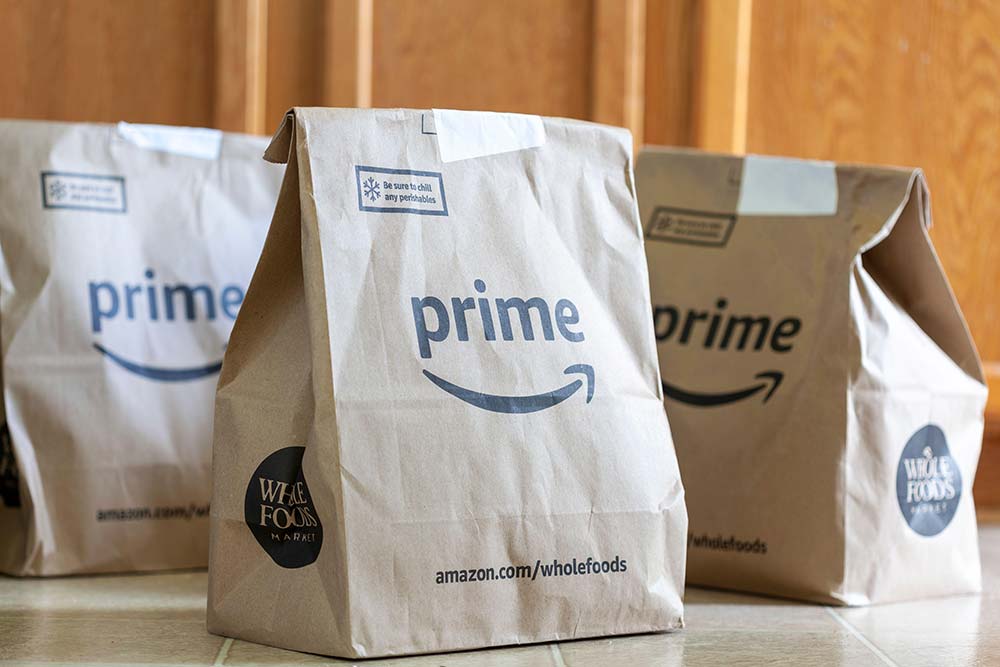
In June 2017, Amazon shocked the retail world with its acquisition of organic food giant Whole Foods for almost $14 billion, the largest acquisition in the company’s history. To the casual observer, it may have seemed an odd move. What would this global e-commerce juggernaut, a company that made its name by selling innumerable products on the internet through a simple web-based interface, want with a chain of brick-and-mortar grocery stores?
The answer: what’s old is new again.



Chapter 5:
Adapting to a New World
The biggest challenge facing e-commerce is the thorny issue of “last-mile” delivery logistics, a profit killing conundrum that has snuffed out many would-be online retailers.
To put it simply, it’s easy enough to ship products in bulk to large regional warehouses. The real challenge is efficiently moving millions of individual packages to hundreds of thousands of addresses, within 24 to 48 hours. Getting your products as close as possible to your customers for the “last mile” of the delivery chain is seen as vital to achieving an efficient and profitable delivery system. That’s even more true when you’re dealing with perishables. Your new pair of socks won’t spoil if they’re in the van too long, but your prime rib will.
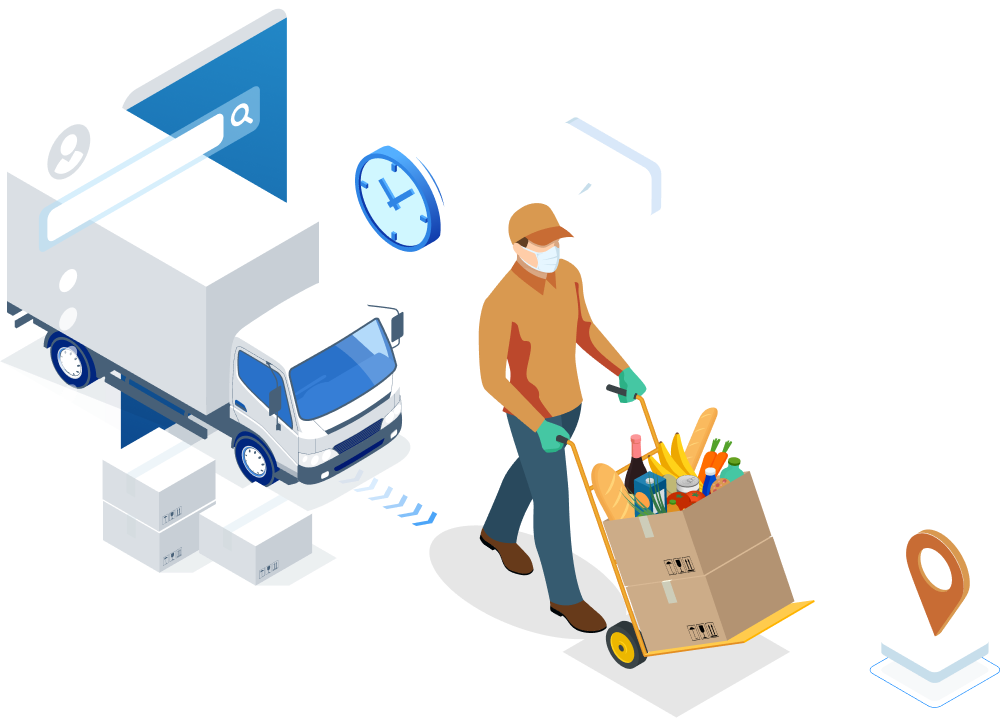
USA Strip Mall Rent Collection Rates – Q2 2020 (%) 1
Grocery stores, often found in strip plazas, are strategically located at the heart of our communities.
It turns out Amazon wasn’t out to buy a 20th century grocery store chain. Instead, Amazon recognized that the curtain was about to rise on the grocery store’s next act. That brick and mortar building down the street was set to play a starring role in redefining the future of grocery retail and ecommerce in a world that is increasingly integrating online and in-person shopping experiences.
Then, a pandemic hit. COVID-19 will surely have ramifications for how we live our lives for decades to come. Some of those impacts are known, and some we can only speculate about.
But if one thing was made perfectly clear it is this: grocery stores are the very definition of essential. The pandemic has driven home just how vital these spaces are. For millions of people, a trip to the grocery store was the only respite from long hours of home confinement. The pandemic also provided an opportunity for retailers to develop and refine their stalled e-commerce platforms, which benefited from significantly higher customer demand.
That’s no surprise, considering global grocery spending hit an all-time high in 2020 as other businesses faltered in the pandemic. According to a Goldman Sachs research report from January 2021, while other retailers were bleeding cash and asking for rent relief from their landlords, grocery stores were among the most dependable and stable commercial tenants, with many landlords achieving 100% rental collection throughout the worst of the pandemic crisis.

Chapter 6:
Grocery in a Post Pandemic World
And while the rate of growth achieved in grocery sales in 2020 is something of an anomaly, consumers have reported they expect to continue spending more on groceries post-pandemic than they did pre-pandemic.
A report from McKinsey and Company and EuroCommerce on the state of European grocery retail in 2021 found that supermarkets and discounters benefited the most from the behavioral changes driven by the pandemic as customers increasingly looked for convenient locations and value closer to home.
The report found these retailers were able to sustain their market share better than big box style “hypermarkets” by harnessing their convenience advantage (a one-stop shop often in close proximity to the consumer). That demand is expected to remain strong as more people continue working from home post-pandemic.
European consumers expect to spend more on groceries post-pandemic 2
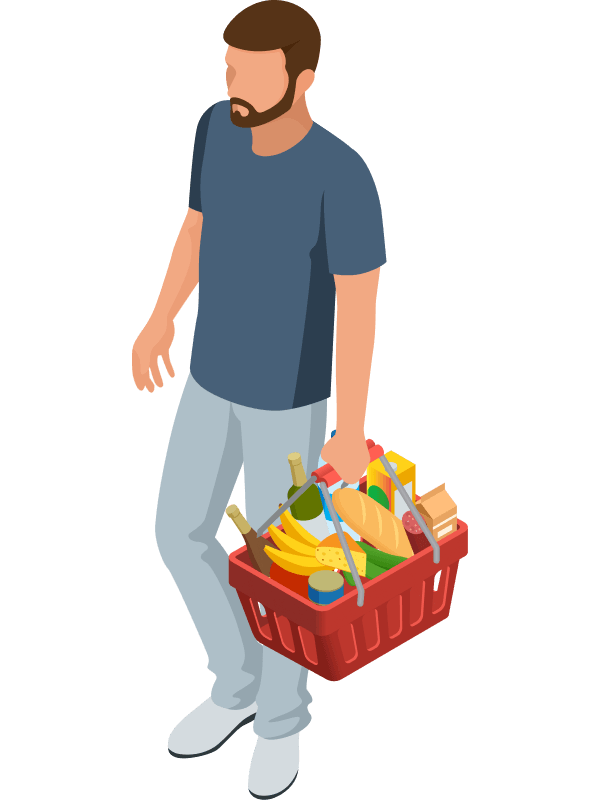

Germany’s Lidl stands out as a success story in this category.
Initially winning customers with a smaller assortment of products and low prices, the company has gradually increased its offerings, without adding costs or sacrificing the perception of low prices, essentially transforming into what’s known as a “soft discounter.”
Total Revenue Growth – 2019 vs 2020 Percentage 3

Chapter 7:
Evolving the Neighborhood Store
So what is next for that neighbourhood grocery store in the strip plaza down the street? The acceleration of e-commerce driven by the pandemic has created the necessary demand for traditional grocery retailers to develop profitable online offerings that take advantage of their brick-and-mortar footprint.
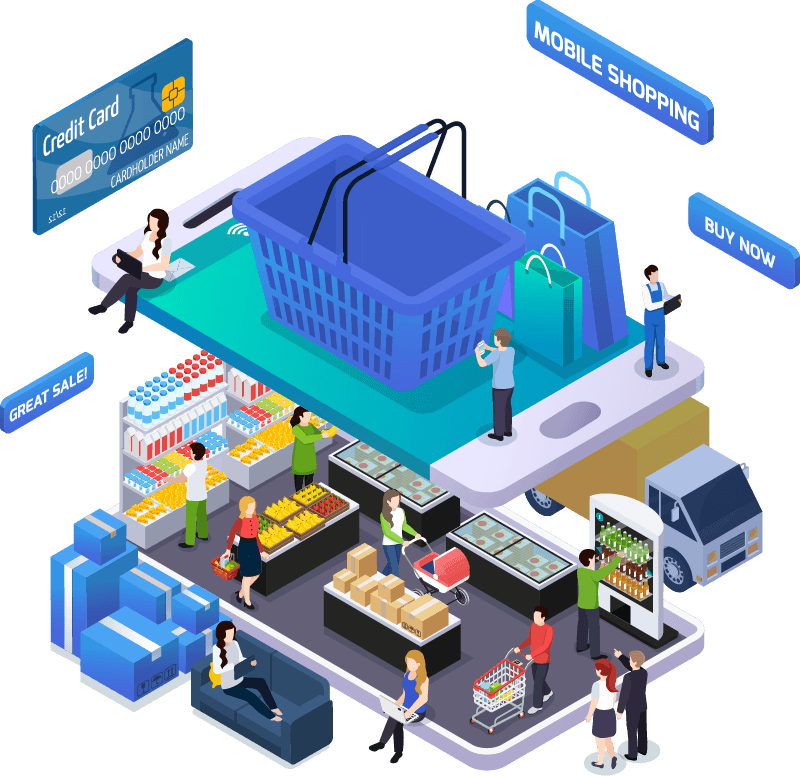
This is the first step in the grocery store’s transformation from a simple retail store to a hybrid retail and distribution hub, serving as a platform for both traditional in-store shopping and online grocery sales.
Physical supermarkets will be critical to ramping up online grocery sales. In particular, customers are increasingly taking advantage of “click-and-collect” options, whereby customers purchase their products online and pick them up in store. Approximately 80% of grocery click-and-collect orders are currently fulfilled by human labour, picking items off shelves at existing stores, rather than being dispatched from large regional warehouses. This reflects the distinct “last mile” advantage that physical grocery stores offer.
Looking out a decade into the future, grocery retailers will increasingly repurpose their physical spaces to incorporate sophisticated micro-fulfillment centers that run alongside traditional grocery retail stores. These micro-fulfillment centers are likely to be located within existing stores, or in adjacent vacancies in the same shopping plaza or strip center. The benefits of being “down the block” from their customers far outweighs the economies of scale that come from traditional regional warehousing. Afterall, there is no fulfillment center closer to a home than a grocery store.
US Strip Mall Retail Sales
Projected CAGR 2020 – 2030 4

Chapter 8:
Omnichannel Shopping Experience
These innovations will move grocery shopping into the kind of true omnichannel experience that customers are increasingly demanding. That means providing customers with a range of options to access the products you sell, such as click-and-collect, home delivery or traditional in-store shopping. Each channel has both advantages and trade-offs.
Just like the Milk Men who dutifully delivered milk to their customers’ homes every day for a fee, home delivery will always have added costs, as a trade-off for convenience. Conversely, customers who want the lowest prices will likely choose to do their own shopping.
Grocery retailers are also working on improving the customer experience across each of these channels, including full-size cashier-less supermarkets, same-day pick-up and delivery, and apps that serve up special offers tailored to individual customers who enter the store. While store formats will vary to reflect diverse cultures, consumer behaviors and demands across North America, Europe and beyond, the strategic location of the brick-and-mortar grocery store remains universal among all of them.
Percentage of UK grocery store sales from click and collect orders 5

Chapter 9:
Capitalizing on the Investment Opportunity
The last century, and particularly the pandemic era, has proven that there is no more stable tenant than a grocer – regardless of whether their lease is five years, or 25 years.
However, the growing ubiquity of e-commerce is fueling a misconception among casual observers that the increase in online grocery shopping might negatively impact neighborhood stores. On the contrary, in addition to facilitating in-store purchases, grocers are now leveraging the central location of their neighborhood brick-and-mortar stores to fulfill online orders as well. What’s more, leading omnichannel grocers like Walmart are investing billions of dollars into automated micro-fulfillment solutions either at or adjacent to their brick-and-mortar grocery stores to support the cost-effective and timely fulfillment of the last mile of food logistics.

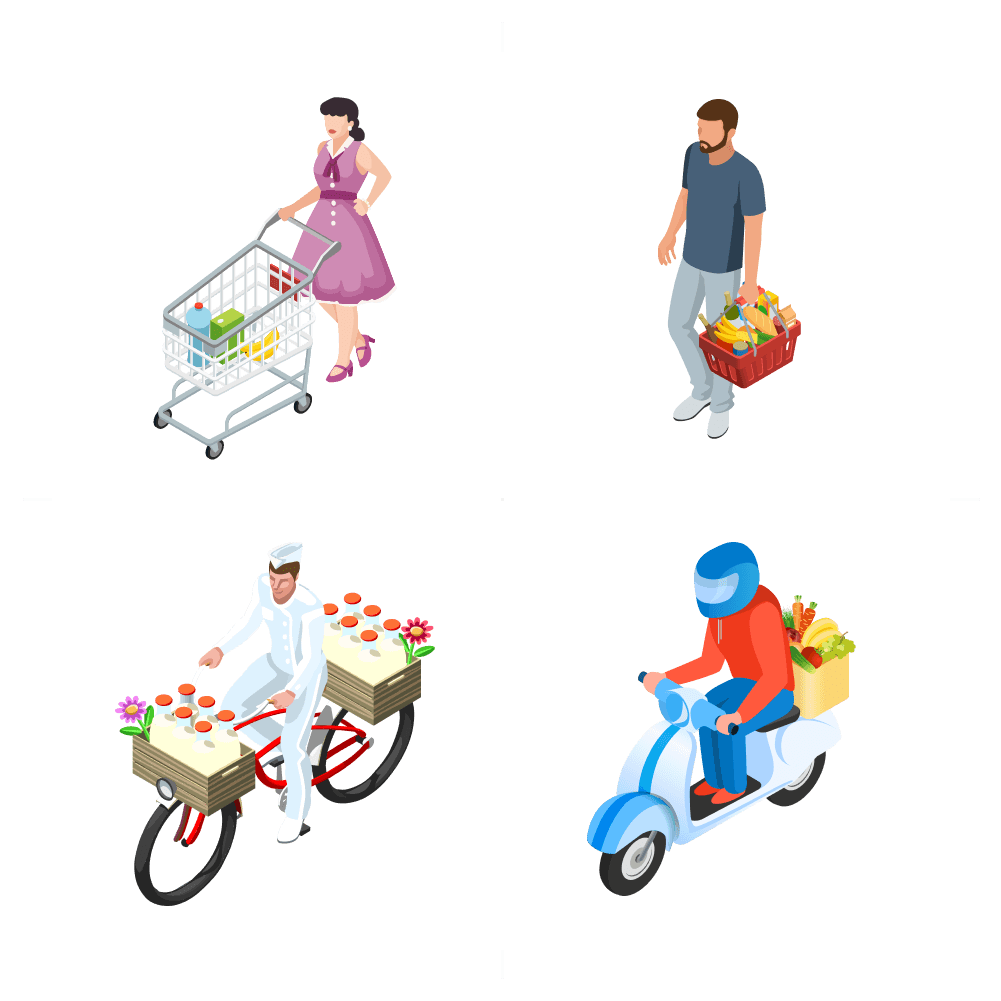
Astute analysts have rightly identified that grocery real estate will be the backbone of last-mile delivery and micro-fulfillment networks for millions of customers.
That conviction is what sparked Amazon’s acquisition of Whole Foods, and it is what other smart investors increasingly see in this uniquely durable class of real estate.
At Slate, we believe one thing is certain: in good times and in bad, consumers will continue to require essential goods and services. And grocery real estate provides the critical infrastructure required to economically distribute these essential items to consumers every day. Whether they choose to “run out” to the store to grab a few things, or order online for pick up or delivery, the grocery store will remain central to connecting customers to the products they need for decades to come. In truth, grocery real estate is not threatened by the rise of ecommerce – it may in fact be one of its major beneficiaries.
